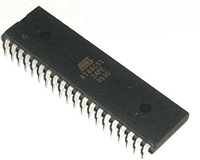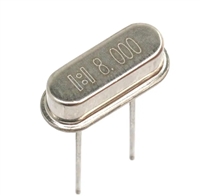| 是否无铅: | 含铅 | 是否Rohs认证: | 符合 |
| 生命周期: | Active | 零件包装代码: | DIP |
| 包装说明: | ROHS COMPLIANT, SIDE BRAZED, CERAMIC, DIP-8 | 针数: | 8 |
| Reach Compliance Code: | compliant | ECCN代码: | EAR99 |
| HTS代码: | 8542.31.00.01 | 风险等级: | 2.33 |
| Samacsys Confidence: | Samacsys Status: | Released | |
| Schematic Symbol: | https://componentsearchengine.com/symbol.php?partID=420417 | PCB Footprint: | https://componentsearchengine.com/footprint.php?partID=420417 |
| Samacsys PartID: | 420417 | Samacsys Image: | https://componentsearchengine.com/Images/9/AD8229HDZ.jpg |
| Samacsys Thumbnail Image: | https://componentsearchengine.com/Thumbnails/1/AD8229HDZ.jpg | Samacsys Pin Count: | 8 |
| Samacsys Part Category: | Integrated Circuit | Samacsys Package Category: | Other |
| Samacsys Footprint Name: | DIP254P762X355-8P | Samacsys Released Date: | 2017-01-10 13:33:33 |
| Is Samacsys: | N | 放大器类型: | INSTRUMENTATION AMPLIFIER |
| 最大平均偏置电流 (IIB): | 0.07 µA | 标称带宽 (3dB): | 15 MHz |
| 最小共模抑制比: | 86 dB | 最大输入失调电流 (IIO): | 0.035 µA |
| 最大输入失调电压: | 100 µV | JESD-30 代码: | R-CDIP-T8 |
| JESD-609代码: | e4 | 长度: | 13.208 mm |
| 负供电电压上限: | -17 V | 标称负供电电压 (Vsup): | -15 V |
| 功能数量: | 1 | 端子数量: | 8 |
| 最高工作温度: | 210 °C | 最低工作温度: | -40 °C |
| 封装主体材料: | CERAMIC, METAL-SEALED COFIRED | 封装代码: | DIP |
| 封装等效代码: | DIP8,.3 | 封装形状: | RECTANGULAR |
| 封装形式: | IN-LINE | 峰值回流温度(摄氏度): | NOT SPECIFIED |
| 电源: | +-15 V | 认证状态: | Not Qualified |
| 座面最大高度: | 4.09 mm | 标称压摆率: | 22 V/us |
| 子类别: | Instrumentation Amplifier | 最大压摆率: | 7 mA |
| 供电电压上限: | 17 V | 标称供电电压 (Vsup): | 15 V |
| 表面贴装: | NO | 温度等级: | AUTOMOTIVE |
| 端子面层: | GOLD | 端子形式: | THROUGH-HOLE |
| 端子节距: | 2.54 mm | 端子位置: | DUAL |
| 处于峰值回流温度下的最长时间: | NOT SPECIFIED | 最大电压增益: | 1000 |
| 最小电压增益: | 1 | 标称电压增益: | 10 |
| 宽度: | 7.62 mm | Base Number Matches: | 1 |
| 型号 | 品牌 | 描述 | 获取价格 | 数据表 |
| AD8229_16 | ADI | 1 nV/âHz Low Noise 210°C Instrumentation A |
获取价格 |

|
| AD8229HDZ | ADI | 1nV/√Hz Low Noise 210°C Instrumentation Ampli |
获取价格 |

|
| AD8229HRZ | ADI | 1 nV/âHz Low Noise 210°C Instrumentation A |
获取价格 |

|
| AD8229HRZ-R7 | ADI | 1 nV/âHz Low Noise 210°C Instrumentation A |
获取价格 |

|
| AD822A | ADI | Operational Amplifiers Selection Guide |
获取价格 |

|
| AD822A/CHIPS | ETC | Voltage-Feedback Operational Amplifier |
获取价格 |

|
 AT89C51单片机资料手册详细解析及应用示例
AT89C51单片机资料手册详细解析及应用示例

 CP2102资料手册解读:CP2102引脚说明、关键参数分析
CP2102资料手册解读:CP2102引脚说明、关键参数分析

 资料手册解读:UC3842参数和管脚说明
资料手册解读:UC3842参数和管脚说明

 一文带你了解无源晶振的负载电容为何要加两颗谐振电容CL1和CL2
一文带你了解无源晶振的负载电容为何要加两颗谐振电容CL1和CL2
